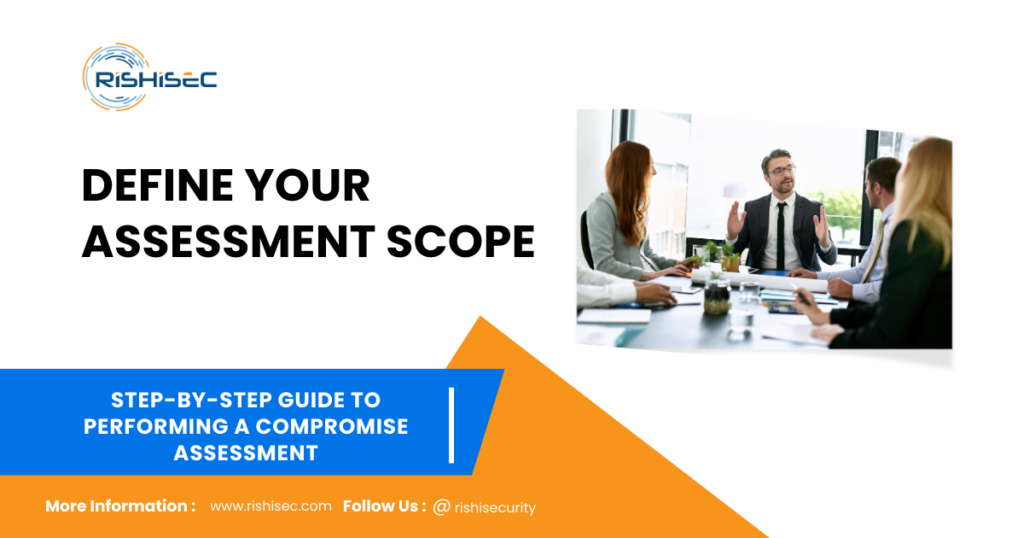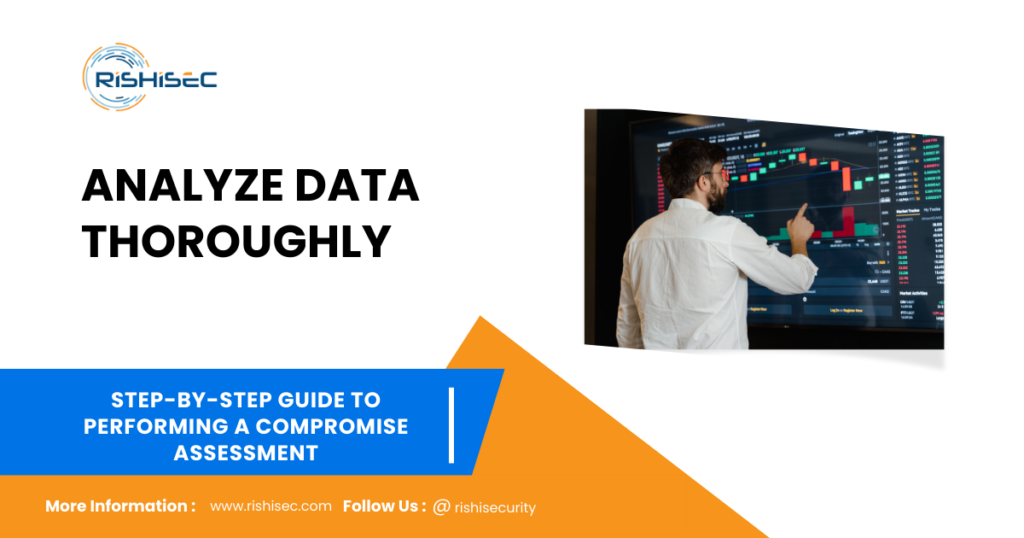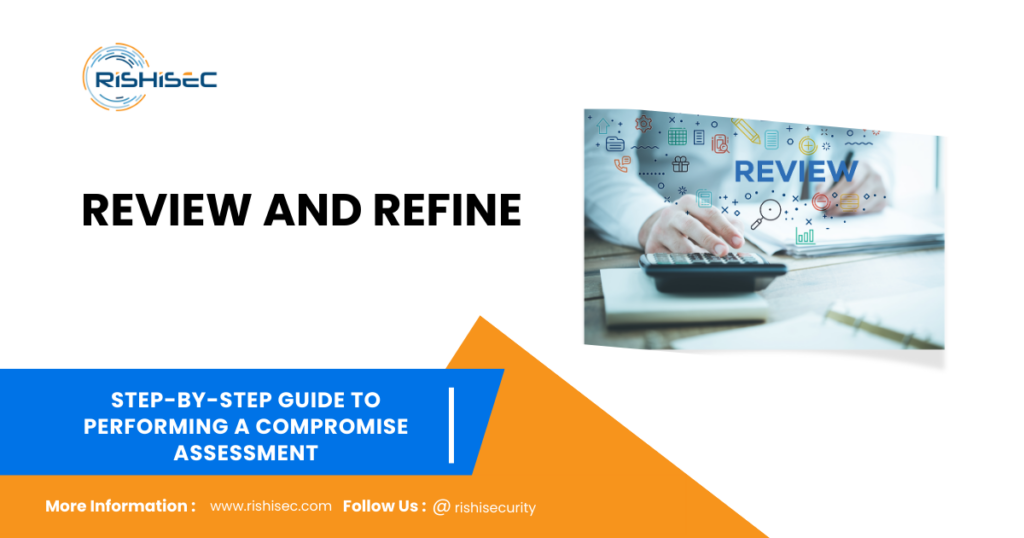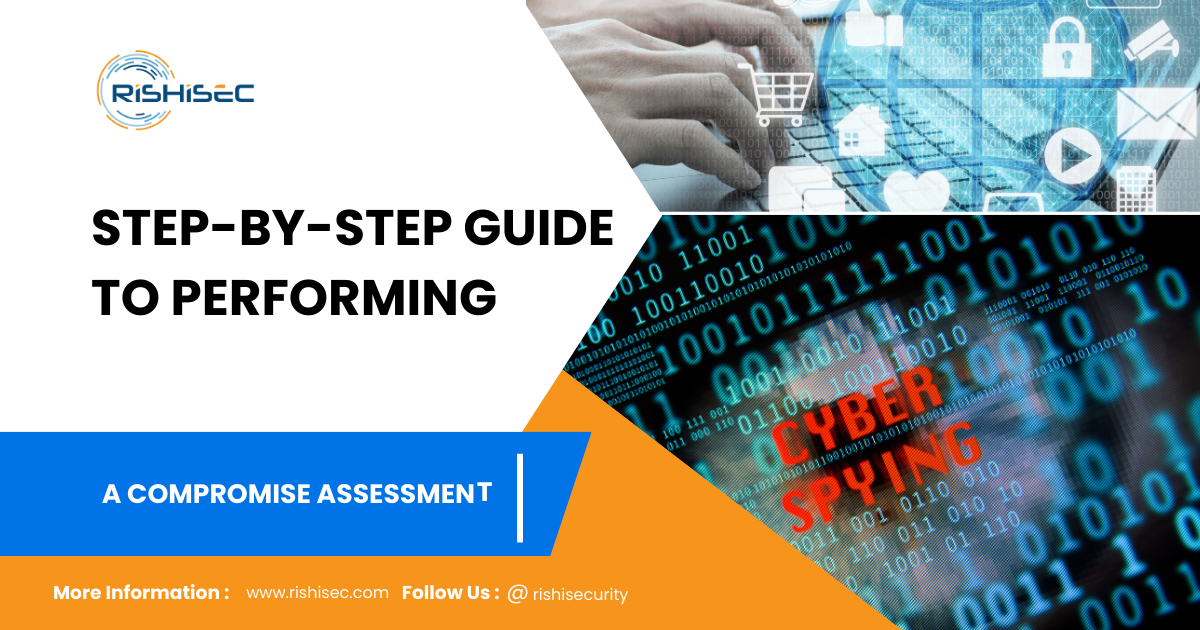In today’s rapidly evolving digital landscape, performing a compromise assessment is crucial for safeguarding your organization. Indicators of Compromise (IoCs) serve as digital footprints left behind by malicious activities, offering the earliest clues of potential breaches. Detecting these markers swiftly is essential to prevent attackers from inflicting serious damage. This Step-by-Step Guide to Performing a Compromise Assessment will take you through each essential phase, offering advanced insights and practical strategies to ensure a thorough evaluation. By following this approach, you’ll stay ahead of evolving threats and protect your assets effqectively.
Contents
1. Define Your Assessment Scope

Identify Key Assets and Risks Begin by defining the scope of your assessment. Identify critical assets, including sensitive data, key applications, and network infrastructure. Understand potential threats and vulnerabilities specific to your industry. Use well-established frameworks such as the NIST Cybersecurity Framework or ISO/IEC 27001 to guide your scope definition and ensure comprehensive coverage.
Set Clear Objectives Determine what you aim to achieve with the assessment. Whether it’s identifying gaps in security, evaluating the effectiveness of existing controls, or understanding potential impact from a breach, clear objectives will help focus your efforts.
2. Collect Comprehensive Data
Gather Data from Multiple Sources Collect data from diverse sources such as network logs, security alerts, and threat intelligence feeds. Ensure you include information from internal systems, external sources, and historical data. Use advanced tools like SIEM (Security Information and Event Management) systems and threat intelligence platforms to enhance the accuracy and completeness of your data collection.
Leverage Advanced Techniques Employ techniques such as behavioral analysis, anomaly detection, and deep packet inspection to gather more insightful data. These methods can help uncover hidden threats that traditional approaches might miss.
3. Analyze Data Thoroughly

Correlate and Interpret Findings Analyze the collected data using sophisticated methods to identify patterns and correlations. Utilize tools like machine learning algorithms and threat intelligence analytics to detect anomalies and potential threats. Interpret your findings within the context of your organization’s specific environment and threat landscape.
Present Insights with Case Studies Illustrate key findings with real-world examples and case studies to provide context and relevance. Highlight how similar threats have impacted other organizations and the lessons learned from those incidents.
4. Craft and Implement Mitigation Strategies
Develop Targeted Mitigation Plans Based on your analysis, create detailed mitigation strategies tailored to address the identified threats and vulnerabilities. Develop action plans that include technical, procedural, and policy-based measures to manage and reduce risks effectively.
Implement Best Practices Apply industry best practices and standards to ensure your mitigation strategies are robust. For instance, follow guidelines from organizations like the Center for Internet Security (CIS) or the National Institute of Standards and Technology (NIST) to align your strategies with proven methods.
5. Review and Refine

Regularly Update Your Assessment Process Continually review and refine your assessment processes to adapt to emerging threats and changes in your environment. Implement feedback from previous assessments and stay informed about the latest developments in cybersecurity.
Engage in Continuous Learning Participate in industry conferences, webinars, and training to keep your knowledge and skills up-to-date. Engage with cybersecurity communities and experts to gain insights and enhance your assessment techniques.
Elevate Your Compromise Assessment Techniques
To stay ahead in the dynamic cybersecurity landscape, integrating the latest technologies and methodologies is essential. Consider exploring advanced solutions and tools that can offer deeper insights and more effective assessments.
Conclusion
This Step-by-Step Guide to Performing a Compromise Assessment provides a structured approach to conducting a thorough evaluation, helping you strengthen your organization’s security posture. By following these steps, you’ll be better equipped to identify vulnerabilities, detect Indicators of Compromise (IoCs), mitigate risks, and enhance your overall cybersecurity strategy, ensuring robust protection against evolving threats.
CTA
Are you ready to transform your compromise assessment strategy? With SentryCA, you gain access to cutting-edge tools designed for seamless integration and comprehensive threat analysis. Sign up for a free trial today and discover how SentryCA can enhance your cybersecurity efforts. Our solution is tailored to meet the unique demands of your industry, providing you with the confidence and capability to stay ahead of emerging threats. Don’t wait—experience the difference with SentryCA now!
Spend your precious time in Enhancing Compromise Assessments for Small and Medium Businesses.


